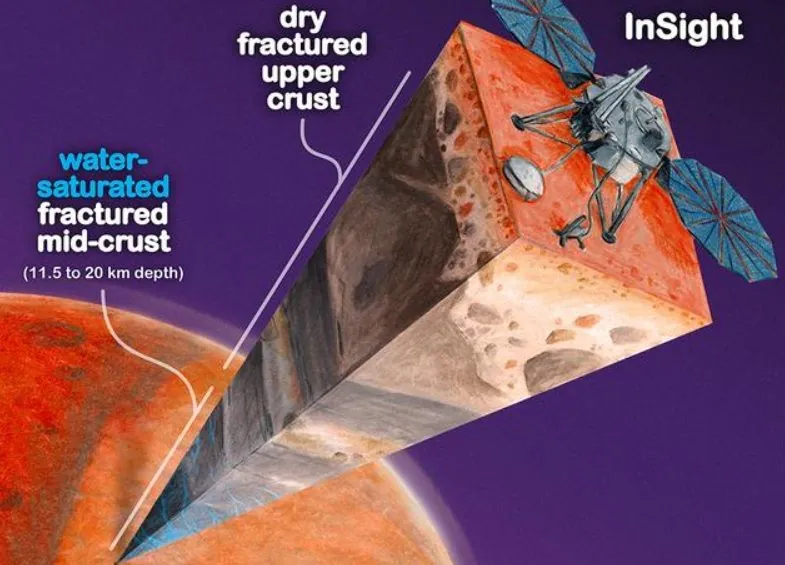The red planet is not a desert world: a huge reservoir of groundwater has been discovered on Mars, and there is other evidence
Kyiv • UNN
Researchers have found traces of a massive underground water reservoir on Mars at a depth of 11.5-20 km. This discovery may change the understanding of the planet's evolution and the possibility of microorganisms.

Researchers have discovered evidence of a huge underground reservoir of water on Mars. The discovery is crucial in the context of living organisms. But there are also other places on the planet where there may be liquid.
Written by UNN with reference to Radio Télévision Suisseand New Scientist.
Details
The sensors of NASA's InSight probe have recorded clear signs of a liquid water reservoir hidden deep beneath Mars, at a depth of 11.5 to 20 kilometers.
This is the latest in a long series of potential water discoveries on the Red Planet, hinting at its temperate past.

The researchers note that this is the largest groundwater reserve ever discovered on this planet. The amount is significant - it could fill the oceans on its own surface to a depth of 1-2 kilometers.
Reference
Billions of years ago, the surface of the Red Planet was covered with oceans and rivers of liquid water. But for the last three billion years, it has been a desert. Most of the surface water on Mars was lost by the middle of the Hesperian period, about 3.7 to 3 billion years ago. However, some water remained below the surface.

New data on water surprised scientists
Thus, Mars is still not as arid as it might seem. Every hint teases researchers as to how crucial water is for living organisms and how useful it could be for future research.
The discovery could change scientists' understanding of the evolution of this star and help them investigate the theory of how microscopic organisms could survive in water bodies.
Understanding the water cycle on Mars is essential to understanding the evolution of its climate, both on the surface and inside
Five places on Mars where water was found in various forms, according to New Scientist:
Buried underground
Just beneath the parched surface of Mars lies an amazing land of water ice. These deposits are protected by layers of dust, but erosion and meteorite impacts can open them up to the curious eyes of our orbiters.

One ice deposit recently discovered using data from the Mars Express orbiter appears to contain enough water to cover the entire surface of Mars in an ocean 1.5 to 2.7 meters deep.
Frost on the poles
The poles on Mars are covered with ice caps, just like on Earth, and we have known this for decades. Many craters on Mars also have smaller ice caps inside. These are the only places on the surface of Mars that remain cold enough for ice to hold.

Floating in the atmosphere
Due to the bitter cold and thin atmosphere on Mars, any liquid water on the surface sublimates, turning directly into gas and rising into the air. Water vapor in the atmosphere is a sign that water and ice are migrating across the planet's surface to form frost, but it is only present in trace amounts. Sometimes there is enough water vapor in one area to form a few cumulonimbus clouds, but for the most part, the amount is almost negligible.
Running downhill
We are talking about slope lines, or dark streaks that appear from time to time on the sloping edges of craters. They were first discovered in 2011, and since then there has been a lively debate among researchers about how they are formed.

They appear mainly during the warmest periods of the year, so they may be caused by melting ice that flows down and then evaporates - making them the only liquid water ever seen on the surface of Mars. However, the sign is quite controversial, as they could just be sand flows.
Trapped in the rocks
If Mars was once covered with water, and now all that remains is a little ice and a lot of dust and rocks, where did all the water go? One possible answer is that it was absorbed into the rocks themselves.

Rovers have found many minerals with water molecules included in their chemical structure all over the planet.